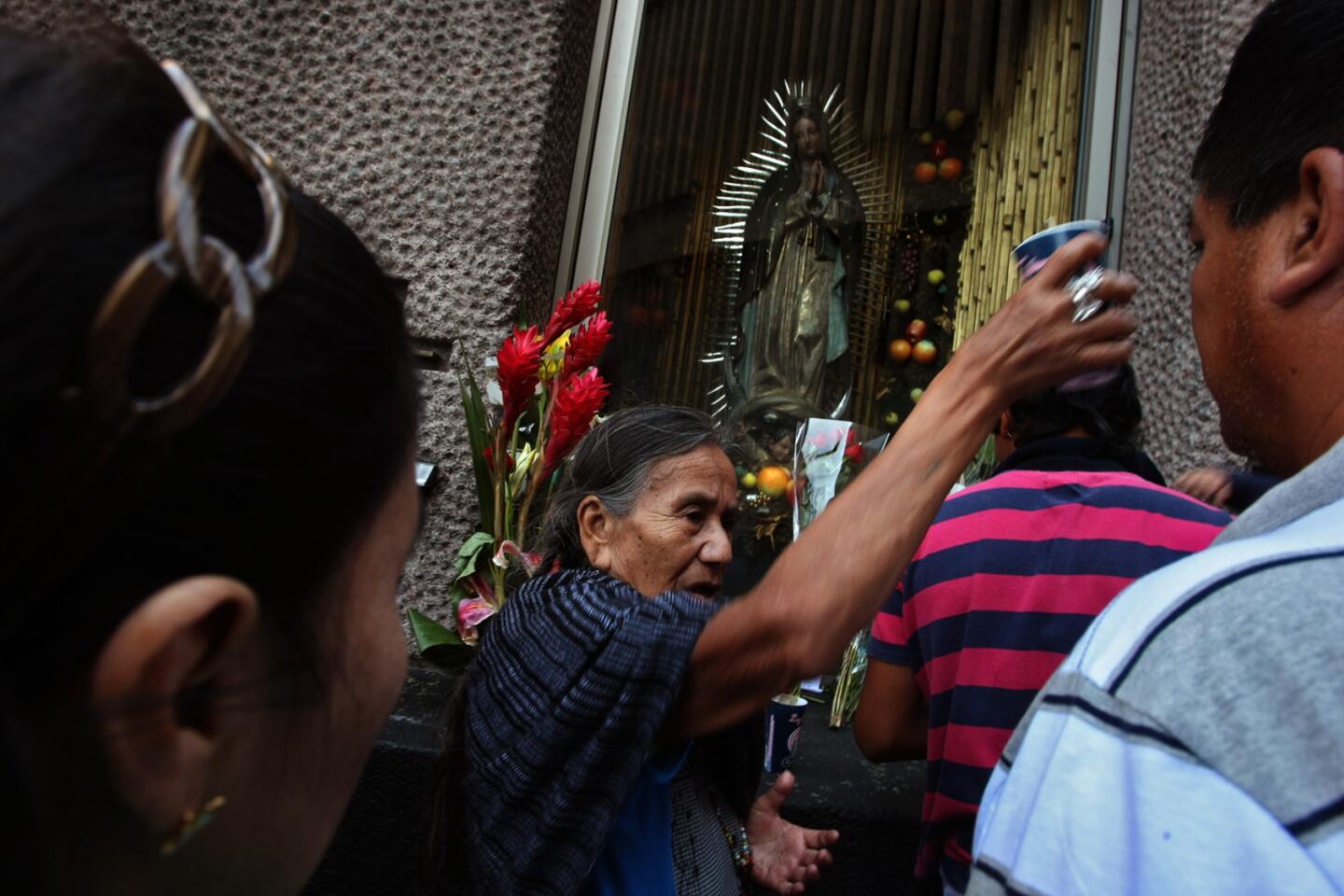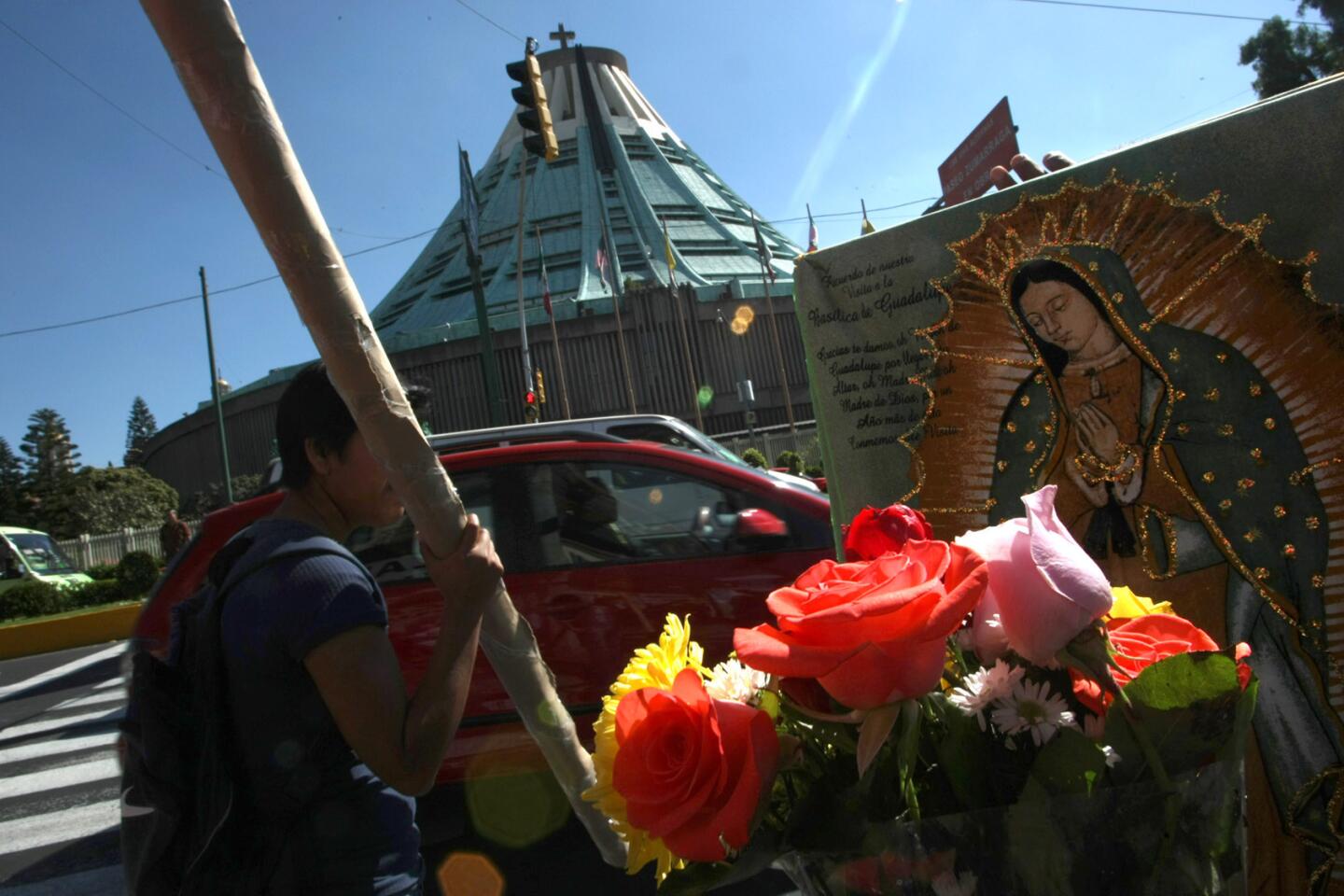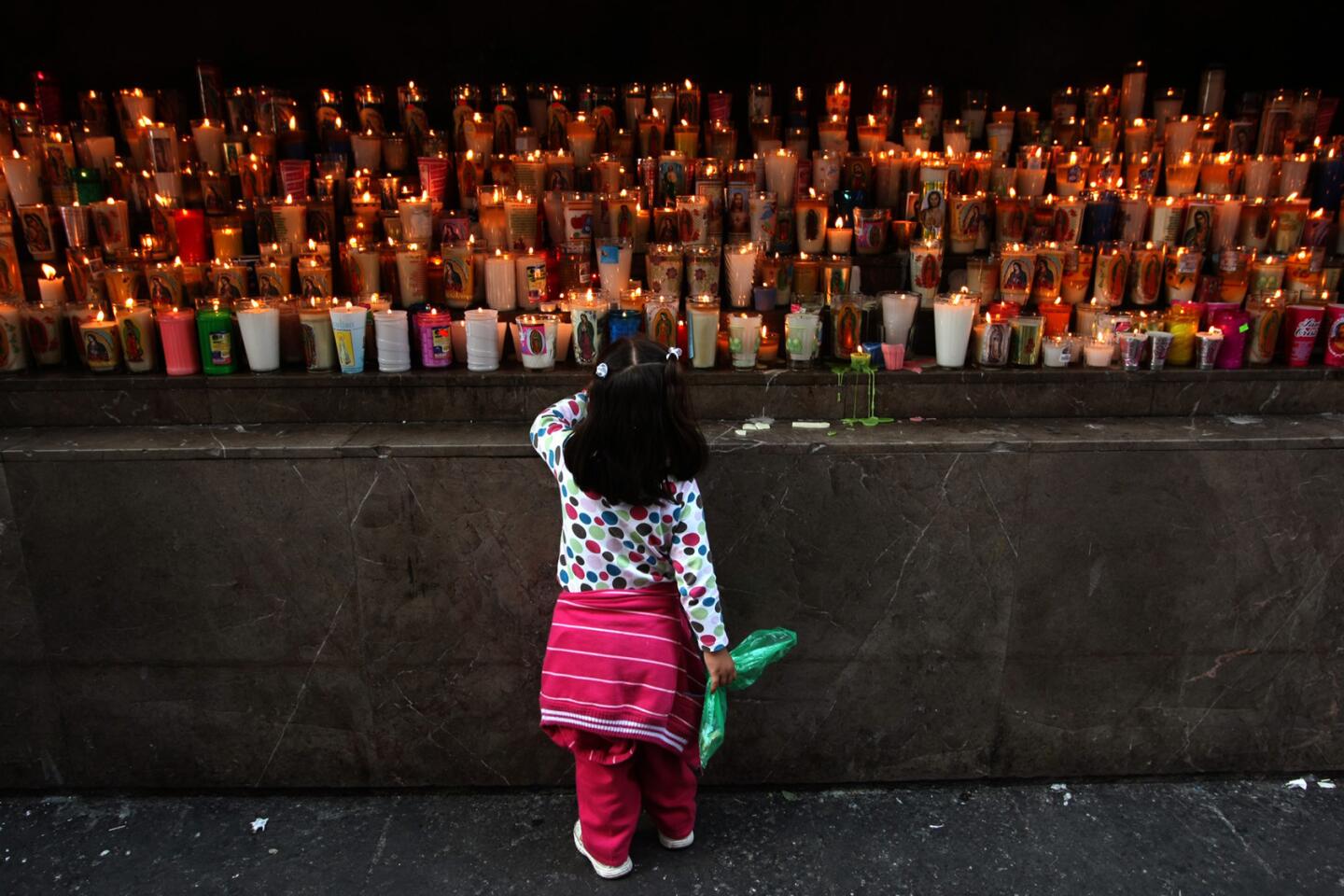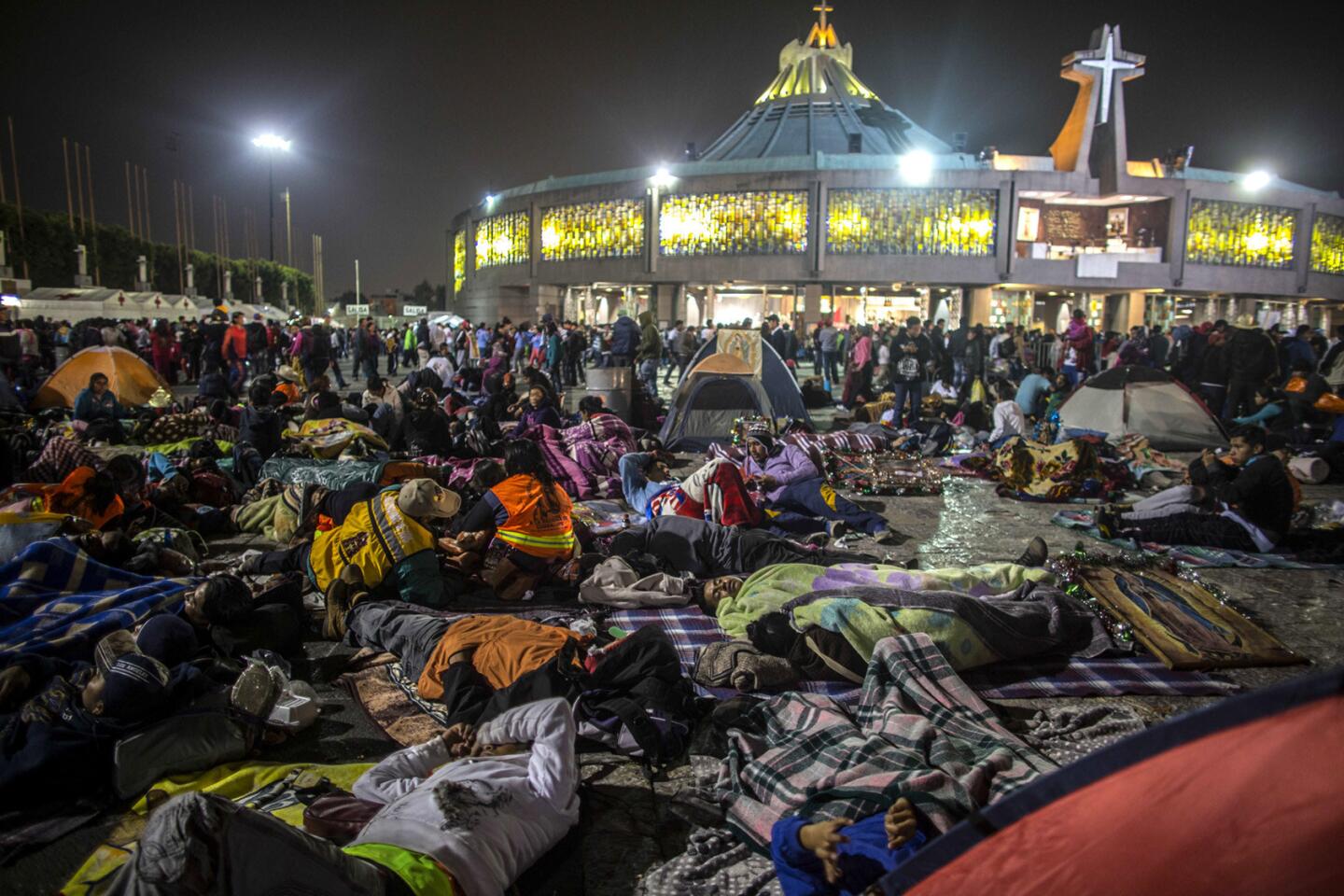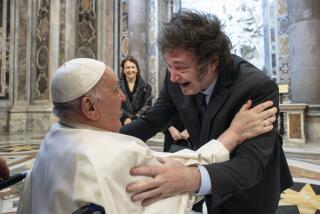How the Virgin of Guadalupe embodied Mexican identity and inspired millions, including Pope Francis
Before his journey to Mexico, Pope Francis had a favor to ask.
Before his first trip as pontiff to a place with more Catholics than any other Spanish-speaking country, where he will surely be mobbed by the thousands night and day, the pope requested something likely to be in short supply — a few minutes alone.
His only company will be perhaps the most revered religious artifact in the Western Hemisphere, a piece of fabric bearing the image of the Virgin of Guadalupe.
The request for a few minutes by himself with the image was a stunningly personal one from the pope. But he knows the Virgin well, he said, because she has seen him through difficult times.
“How many times I have been fearful of a problem or that something bad has happened and I don’t know how to react, and I pray to her,” said the pope in September, according to quotes distributed by Catholic News Service. Francis celebrates Mass at the Basilica of Our Lady of Guadalupe on Saturday, the second day of a six-day tour of the country.
As a man born in Argentina and the first pope from the New World, it should not be surprising that Francis turns for comfort to the “Empress of the Americas.”
In Mexico and Latin America, as well as the southwestern U.S., this image of the Virgin Mary is dynamic, ubiquitous and powerful. She is everywhere, on everything — stenciled on buildings, sprayed onto the sides of trucks, inked into people’s arms and legs and even the sides of their necks.
She appears among America’s Christian right and Catholic gang members too. “Once tattooed [with the Virgin of Guadalupe], the gangster is both sinner and saint, holding in visual tension the spectrum of human behaviors and hopes,” religion scholar Judith Dupre wrote.
The Virgin offers adherents her protection, listens to their sorrows and alleviates their pain. She cannot herself perform the miraculous, according to Catholic teaching, but she may intercede on behalf of those who ask her blessing.
Though it has not been declared a miracle within the Roman Catholic Church, the reports of her first appearance forever changed the Western world.
In the early 16th century, Spanish missionaries were having trouble converting the local Aztecs, who worshiped a pantheon of gods, both male and female.
The story of the Virgin of Guadalupe, told countless times in churches and from parents to children, unfolded in the winter of 1531: A peasant crossing a hillside called Tepeyac, near Mexico City, was visited by the Virgin, who appeared to him as dark skinned and spoke his language, Nahuatl. She asked him to build a church on the hill.
The peasant, named Juan Diego by the Spanish, rushed to tell the archbishop of Mexico City the good news. But the archbishop sent him away. Juan Diego returned to the hill, where the Virgin appeared to him once more.
The archbishop wouldn’t listen, Juan Diego told her.
Try again, she responded.
And once again Juan Diego went to the archbishop to report the apparition, and once again he was turned away.
Bring me a miracle, the archbishop told him.
He needs a miracle, Juan Diego told the Virgin.
NEWSLETTER: Get the day’s top headlines from Times Editor Davan Maharaj >>
So, according to tradition, she provided it to him: a handful of Castilian roses — flowers from Spain, not native to Mexico, fully bloomed in the dead of winter. Juan Diego gathered up the flowers in his cloak, or tilma, and rushed to the archbishop. He let the flowers tumble out. There, on the fabric, was the image of the Virgin so familiar today: the slight incline of the head, the expression of compassion, the blue cloak studded with stars, the crescent moon at her feet held up by an angel, also dark skinned.
The date was Dec. 12, and for nearly 500 years, there it has remained, the most visited Marian shrine in the world.
The effect was swift. Although some Catholics did not immediately believe the image was miraculous, the Aztecs quickly took to a female figure worthy of worship and capable of interceding on their behalf, and began to convert to Christianity at a rate unseen before.
Francis acknowledges that in Mexico, belief in the Virgin sometimes reaches deeper than even one’s belief in religion.
“You all know the joke of that Mexican man who would say, ‘I am an atheist, but I am Guadalupan,’” Francis said in comments from Catholic News Service. “It makes sense.”
Juan Diego was canonized by Pope John Paul II in 2002 before a crowd of 12 million in Mexico City. Now, Dec. 12 is the feast for Our Lady of Guadalupe and is regarded as an auspicious birthday for Mexicans. It certainly was to Cristofer Pereyra, born Dec. 12 and now spokesman for the Archdiocese of Phoenix (where the patron saint is — yes — the Virgin of Guadalupe).
“I feel she’s always been with me,” Pereyra said. “I know it’s not exclusive to me, but I feel it.”
Mexicans often refer to her as la virgencita, literally “the little virgin” but a warm term of endearment. In recent years her appeal has gone beyond the Mexican community. At an annual march on her feast day in Los Angeles, marchers include members of ethnic Chinese, Korean, Filipino, Tongan and Vietnamese congregations.
The Virgin indeed provides some direct, if unintended, protection. In Los Angeles, store owners who want to protect their buildings from graffiti have learned to decorate them with images of the virgin — taggers won’t deface her.
“You know, Catholics, we’re big on images,” Pereyra said, mentally counting the representations of the Virgin he has in his house and office. He settled on four.
“Oh wait, I have another one here,” he said.
The images of the Virgin have a purpose beyond proclaiming faith, Pereyra said.
“We feel that through life, it’s difficult to have something close at hand without being able to see it. It brings us closer when it’s there in front of us,” he said. “We like to be reminded.”
Follow @nigelduara on Twitter.
Join the conversation on Facebook >>
MORE ON THE POPE IN MEXICO
Pope to visit Mexican state hit by narco-violence: ‘You are living your little piece of war’
On the eve of Pope Francis’ arrival in Mexico, not everybody is so welcoming
Where the pope will visit in Mexico
More to Read
Start your day right
Sign up for Essential California for news, features and recommendations from the L.A. Times and beyond in your inbox six days a week.
You may occasionally receive promotional content from the Los Angeles Times.
